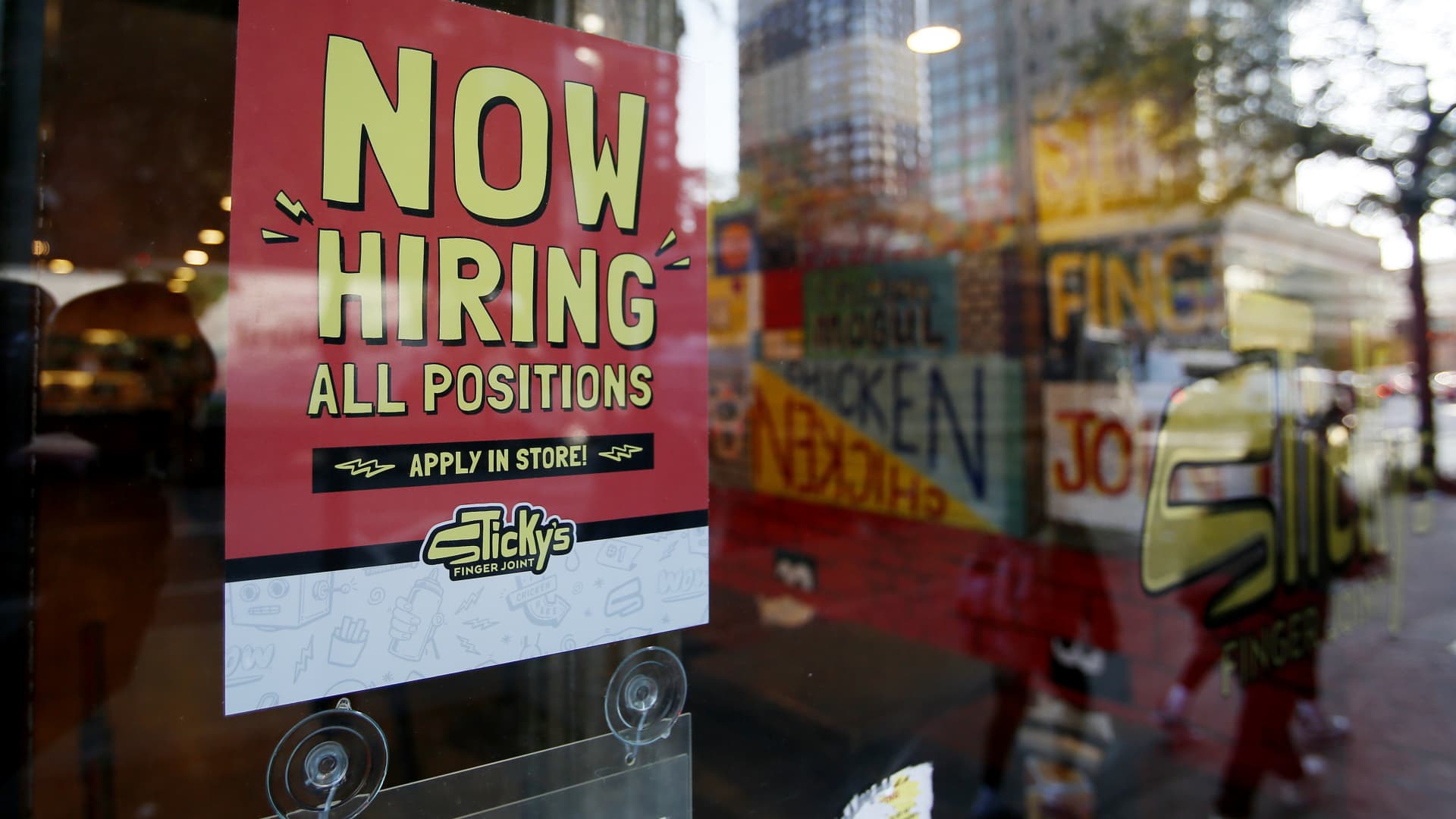The unemployment rate rose sharply in August, as the summer of 2023 neared a close with a job market in slowdown mode.
Nonfarm payrolls grew by a seasonally adjusted 187,000 for the month, above the Dow Jones estimate for 170,000, the U.S. Bureau of Labor Statistics reported Friday.
However, the unemployment rate was 3.8%, up significantly from July and the highest since February 2022, and nonfarm payrolls estimates for previous months showed sharp downward revision. That increase in the jobless level came as the labor force participation rate rose to 62.8%, the highest since February 2020, just before the Covid pandemic declaration.
A more encompassing unemployment measure that counts discouraged workers as well as those working part-time for economic reasons jumped to 7.1%, a 0.4 percentage point increase and the highest since May 2022.
Average hourly earnings increased 0.2% for the month and 4.3% from a year ago. Both were below respective forecasts of 0.3% and 4.4% and another possible sign that inflation pressures are easing.
“The U.S. labor market continues to come back to earth but from a very high peak,” said Nick Bunker, head of economic research at the Indeed Hiring Lab. “The labor market was sprinting last year and now it’s getting closer to a marathon pace. A slowdown is welcome; it’s the only way to go the distance.”
Health care showed the biggest gain by sector, adding 71,000. Other leaders were leisure and hospitality (40,000), social assistance (26,000), and construction (22,000).
Transportation and warehousing lost 34,000 and information declined by 15,000.
While the nonfarm payrolls growth continued to defy expectations, previous months’ counts were revised considerably lower.
The July estimate moved down by 30,000 to 157,000. June was revised lower by 80,000 to 105,000, making that the smallest monthly gain since December 2020.
The unexpected increase in the jobless rate came as the rolls of the unemployed grew by 514,000. The household count of those employed increased by 222,000.
When it comes to the closely watched jobs count, August is often one of the most volatile months of the year and can be subject to sharp revisions later. While the initial estimate and final counts in 2022 were little changed, the 2021 figure ended up more than doubled in the final count.
August’s jobs reading comes at a pivotal time as Federal Reserve officials look to chart a course forward for monetary policy.
Markets widely expect the Fed to skip a rate increase at its Sept. 19-20 meeting. However, market pricing still points to about a 38% probability of a final hike at the Oct. 31-Nov. 1 meeting, according to CME Group data.
“This report is more or less right in line with Fed expectations,” said Dan Greenhaus, chief economist and strategist at Solus Alternative Asset Management. “The labor market continues to slow and loosen, even accounting for the strike activity, and I don’t think much about this report changes the Fed narrative.”
Recent data has painted a mixed picture of where the economy is headed, with overall growth holding steady as consumers continue to spend, but the labor market beginning to loosen from historically tight conditions.
Job openings, for instance, fell to 8.83 million in July. That’s still well above where they were before the Covid pandemic but is the lowest level since March 2021. That equated to 1.5 openings for every worker the BLS counts as unemployed.
At the same time, inflation has shown signs of cooling even though it remains well above the level where Fed policymakers feel comfortable.
The Commerce Department reported earlier this week that personal consumption expenditures prices, the Fed’s preferred inflation gauge, rose just 0.2% in July. That equated to a 3.3% 12-month gain, or 4.2% when excluding food and energy – the “core” level that the Fed thinks is a better measure of longer-term inflation.
Consumer spending was strong during the month, rising 0.6% when adjusted for inflation even though real disposable personal income fell 0.2%. Households have been using credit cards and savings to compensate, as the personal savings rate fell to 3.5% in July, down sharply from the 4.3% level in June.
The department also reported that gross domestic product increased at a 2.1% annualized rate for the second quarter, a level that is still above what the Fed considers trend growth for the U.S. economy but below the initial 2.4% estimate.
However, the Atlanta Fed is tracking third-quarter GDP growth at a robust 5.6% pace. That counters long-running expectations that the economy is likely to hit at least a shallow recession following a series of aggressive Fed interest rate hikes.
